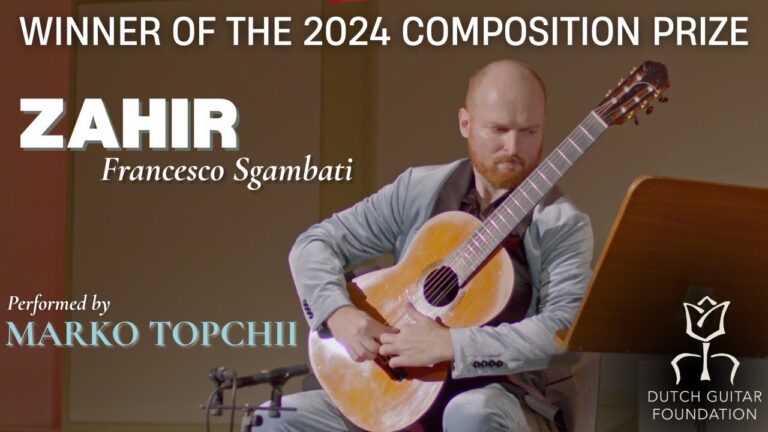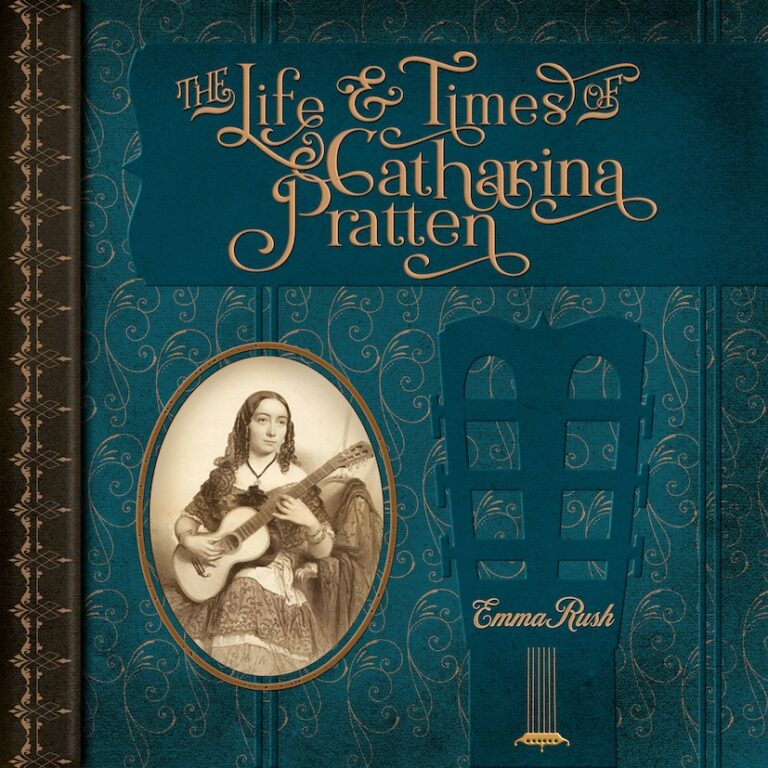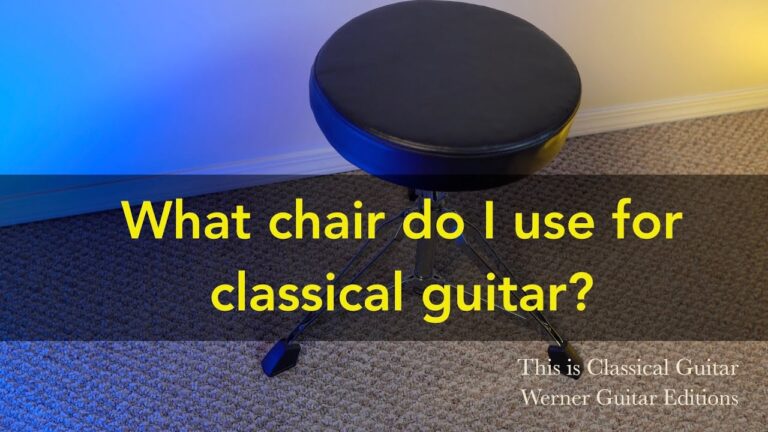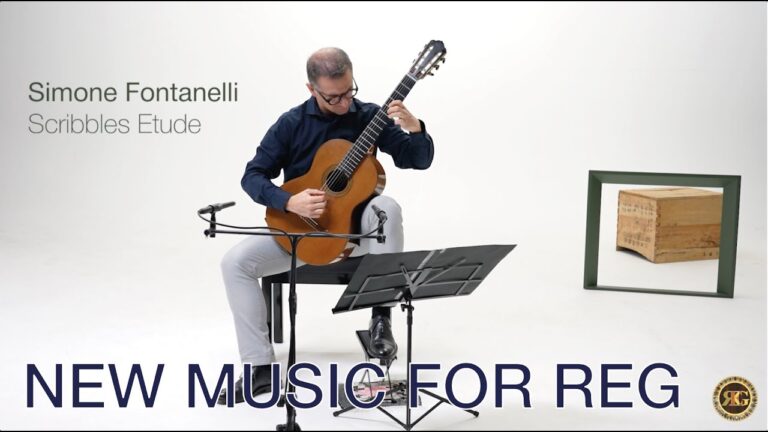
The Techniques of Guitar Playing
By Seth F. Josel and Ming Tsao
Publisher: Baerenreiter (2014)
Language: English
Pages/Format: 233 S.-29x21cm
Book & CD
Buy it via the publisher or Amazon.com: The Techniques of Guitar Playing
One of my favourite things about running this site and working in the guitar world is connecting with great artists of our time. Last year I connected in person with one of my longtime heroes, Kazuhito Yamashita. For this post I connected with an artist that I can confidently say is one of the most important and influential names in contemporary guitar and new music, Seth Josel. Josel has performed over a hundred new music premieres, countless commissions, recordings, radio performances, and is a co-founder of Sheer Pluck, the most important database resource for new music on guitar. When Seth contacted me about his new book and agreed to do an interview I was very excited. Plus, with composer and co-author Ming Tsao this release has even further weight and interest. Ming Tsao has had his works performed by many of the great musicians of our day and is professor of composition at Gothenburg University.
The Techniques of Guitar Playing, as the publisher states, “provides a comprehensive survey of contemporary performance techniques on the classical guitar. It was inspired by a new generation of solo guitarists whose extraordinary technical and virtuosic skills have paved the way for a new understanding of instrumental performance practice.” What impressed me most was the wide array of musical examples ranging from historical lute tablature to avant-garde contemporary works. Not only does the book explain how the guitar works and functions but also explores the vast possibilities of musical textures, sounds, and capabilities of the instrument. The book also takes an in-depth look at the guitar in the context of ensemble and orchestral writing. It puts guitar techniques into historical perspective offering discussions on the place of the guitar in a variety of settings. This is an amazing accomplishment as traditional orchestration books give little information on the guitar, let alone it’s musical potential.
You can view the table of contents at Baerenreiter but the main sections look at: Techniques of the right and left hands; Special harmonies and percussive techniques; The main instruments of the guitar family and their potential; Possible ways of notating contemporary guitar literature. However, the book dives much further into the possibilities with detailed charts on far ranging techniques such as multiphonics, bitones, and prepared guitar. It also comes with a CD for an auditory experience.
So who is this book for? I would say it is for the composer first and the guitarist second. However, I can’t imagine any guitarist who would not want this book. If we as guitarists are going use the guitar as a musical tool, should we not then explore the guitar from the composers perspective? Should we not be interested in the historical and contemporary context of guitar writing? Composers will use this book to understand the possibilities of the instrument but also to learn how the guitar can function in ensembles for optimal musical results. Guitarists will use this book to understand scores, notation, interpretation and historical usage of varying techniques. This book should also help to codify guitar notation so scores can be easily read and understood in the future. Beginner and early intermediate guitarists will likely be overwhelmed by the amount of information so beware. However, they will appreciate the help it will provide with score interpretation and can be assured that it will be used later on as they advance or become interested in new music. Composers of all levels will find it useful for an entire lifetime of composing. As Seth states in the interview below, “we wanted to make this THE BOOK for composers.”
Conclusion
Seth F. Josel & Ming Tsao have written the most comprehensive and informed survey of guitar techniques, composition, and orchestration to date. It will provide a lifetime of helpful reference and interest to composers and guitarists and is sure to encourage and inspire waves of new music for the instrument. – Bradford Werner (thisisclassicalguitar.com)
Interview with Seth Josel
Interview by Bradford Werner via email on September 28th, 2014.
Bradford Werner: This publication is a massive undertaking on the part of Ming Tsao and yourself. How did this project come about?
Seth Josel: Ming and I first met at Schloß Solitude in Stuttgart in 2003. Chaya Czernowin and Steve Takasugi lead a summer composition academy there every two summers, and I had the privilege of participating in the concerts that mark the conclusion of the session as a guest of the Freiburg-based ensemble, SurPlus. Amongst the works slated for premiere was Ming’s stunning chamber work, “Not Reconciled”, which features one of the most challenging and colorful guitar parts in the entire literature. (Our book cites the work a few times which, amongst others, features new ways of thinking about notation and timbral possibilities for the guitar.) The performance went fairly well, and we remained in touch thereafter. In 2008 Ming spent a year in Berlin with his wife who was here on a Fullbright, and during a late-night discussion (sans alcohol!) we spoke about the possibility of collaborating on a book project. (I should point out that I had entertained the idea for years, but hadn’t met the right person with whom I thought I could effectively collaborate on such a massive undertaking. Primarily, this concerned issues such as mutually shared visions and aesthetic tastes, apart from the questions of logistics as well as mutual respect and sympathy.) Ming was the one who courageously broached the subject; hence, I am eternally grateful to him for lending the project his distinctive imprimatur, but for actually setting the cogs and wheels in motion. The rest is history, i.e. we pitched the idea to Bärenreiter, they were supportive of the idea and requested an exposé, a table of contents and a sample chapter from us, which we in turn wrote during the summer of 2009. Two or three weeks following the submission of the materials, the deal was sealed during a breakfast meeting in Berlin. Of course, that was just the beginning of an almost epic- like, and in part, nerve-wracking process; indeed, there was quite a bit of “white water” to be negotiated along the way, which included convincing a German music publisher of this stature to publish an English-language book! (The other books in the contemporary performance technique series are either bi- or trilingual.)
BW: You’ve played a number of works by Ming Tsao including If ears were all that were needed, and Not Reconciled. Can you tell us about your collaborations with the composer and how your interactions inspired or influenced this book.
SJ: Well, the answer is contained above for the most part, but it might be worthwhile to note that I was quite excited by the prospect of a Ming Tsao work for solo guitar. Our illustrious colleague, Jürgen Ruck, had commissioned “If ears …” for his “Goya Project.” (For those readers unfamiliar with this undertaking, Jürgen has commissioned dozens of miniatures over the past decade. They are designed to be musical reflections on a chosen sketch by Goya. There are over twenty works in the series now, many of them quite stunning.) The work features number of the technical innovations which were introduced in “Not Reconciled”, amongst them the “slow- motion” rasgueado and the “attackless” harmonics. Ming’s ear – no pun intended! – is highly refined and he has a phenomenal sense of rhythm. He knows exactly what he wants; furthermore, he has a prowess on the instrument stemming from his experience as a virtuosic bass player which is impressive. It’s been a joy to work with such a consummate musician.
BW: You’ve worked on hundreds of new music commissions, what have been some of the main pros and cons of working with composers when it comes to the guitar? Do you think this book will help composers more easily understand the possibilities of composing for the guitar and encourage new works?
SJ: “Hundreds” is perhaps an exaggeration; though it’s indeed well over one hundred by now! Anyway, in my mind each collaboration is unique; this has to do with age, culture, pedigree, aesthetic preferences and personality. It’s been a tremendous joy to witness the experimental and innovative spirit that many have demonstrated over the years; hence, call that a “pro” if you will. In addition, I generally enjoy the social nature of the endeavor, the building up of a collaborative relationship with all its potential for success as well as failure. Some of these professional relationships have resulted in life-long friendships, and I am grateful for that. Re the instrument per se: those who were familiar with the preposterous nature of the guitar were less intimidated by its idiosyncrasies. By and large, the composers that had some guitar competency were a bit more successful in terms of creating idiomatic textures (though certainly that says little about the aesthetic interest of a given piece!); in all fairness though, I should stress that there have been many notable and surprising exceptions. Those that were novices were generally a bit more “needy” in terms of requesting overall guidance, and in general it’s safe to say they were more prone to miscalculation. Still, I wouldn’t categorize this as a “con,” as failing can be often virtuous, particularly if we’re talking about a student composition. Rarely have I asked someone to completely rewrite a passage based on it being unplayable. Occasionally I might have suggested an “ossia”, but generally I have always been committed to realizing the composer’s original compositional intentions, as often they are musically more compelling than the compromise which emerges. Lastly, and this might appear odd, but I would say the only objective issue on the “con” side is dealing with works that are submitted past their deadlines. That can be rather nerve-wracking indeed, depending on the context. My position regarding deadlines in general has hardened somewhat over the years, however every once and while I still find myself in situations where exceptions have to be made. With respect to your second question, I will address this issue below.
BW: The book is impressive both in its thoroughness of various guitar techniques and musical examples but also the results of orchestration on the guitar. Was it difficult deciding how to organize the book and its layout? How did you decide to balance the different perspectives of a guitarist looking for explanations versus composers understanding the possibilities of composing for the instrument?
SJ: Thank you for the compliment. The orchestration sections were of great importance to us from the outset, if not to simply reveal the diverse and colorful contexts in which the guitar has appeared since the beginning of the 20th century. The table of contents underwent a series of revisions over the years, which is simply part and parcel of the process. However, we were able to come up with a fairly convincing overall structure as well as an internal chapter organization in a rather straightforward, hassle-free manner, which boded well for the collaboration of course. There are two notable anecdotes which might be of interest to the readers since we’re talking about notions of process: firstly, we added the section involving the diverse expressive markings from Webern’s op. 18 fairly late in the game, i.e. even after we had submitted the final proofread draft (which of course created a headache in terms of all the example numberings!!!), but we felt it was imperative to underline the fact that there might be information in a score apart from “just the notes” which is important for performers to bear in mind. Also the fact that the various combinations of dots, accents etc. we see in the Webern example might mean different things to different composers! Secondly, we had originally thought of including both the classic and the electric guitar. Indeed, the electric guitar was an equal partner in our sample chapter (the harmonics chapter), as we wove it into the fabric in a very elegant, and apparently, convincing way. During the research phase for the first chapter it became clear to us that ostensibly we are talking about two very different instruments, in addition to the fact that any serious, integral treatment of the e. guitar would have to include a chapter solely dedicated to signal processing and amplification. Hence we decided to solely focus on the acoustic guitar with hope of writing “Volume II” which would be dedicated to the e. guitar with a significant section on the e. bass, which of course Ming is highly qualified to write.
Regarding your second question: in all frankness we weren’t really concerned with the guitarist’s perspective. Instead, we had a laser-like focus on this notion of demystifying the instrument for composers, and at the same time inspiring them to think creatively about the sonic capabilities of the instrument. I would suspect that guitarists who are interested in new art music will somehow gravitate to the book eventually; however, we wanted to make this THE BOOK for composers, even for those remotely thinking about writing for the instrument. “The Techniques of Guitar Playing” aspires to be a truly indispensable “vade mecum”, and we do hope to have succeeded!
BW: What’s current and next up for Seth Josel?
SJ: I’ve had a truly explosive beginning to the season, with 5 different projects in the span of two-three weeks: some chamber music, a few orchestra/ensemble concerts as well as coordinating and leading two performances of Osvaldo Budón’s “tablaturas espaciales”, a “concert installation” for 55 microtonally tuned guitars – and 11 players. (I could speak about this work for hours, but space is limited herein.) Several book presentations for composition colloquia are on the immediate horizon. I’ll be a guest at dozens of universities/music academies in the US, the UK and Germany during the coming months, including Harvard, U Cal Berkeley, the Musikhochschule in Köln as well as Huddersfield University. Amongst a few of the notable premieres this season, I will be presenting a work by a very gifted sound artist, Kirsten Reese, for electric guitar and “Fairlight” system (!) at “Attacca” in Stuttgart, and Chaya Czernowin is writing a new chamber work for KNM Berlin which will be premiered at WDR’s Witten Festival next April. In terms of larger ensemble projects, I have a second engagement this season with the Berlin Radio Orchestra in January involving Helmut Lachenmann’s rarely performed “Schwankungen am Rand” which I have been relishing the opportunity to play. As regards publications, as if the book weren’t enough (indeed, this year has been quite an amazing year of CD releases, including the “West Coast Soundings” double CD on Wandelweiser, as well as Henze’s rather hefty “6th Symphony” for Wergo): my colleague Wiek Hijmans and I are very much looking forward to release of our recording of Tristan Murail’s “double concerto” entitled “Contes Cruels” on Aeon in January.
BW: Any pieces of advice for young guitarists looking to become active in new music for guitar?
SJ: Well, I could expound on this topic at length I suppose, given the very broad nature of my concert/recording experience. In order to keep this succinct though, there are two or three general remarks I have, the first is slightly controversial, given the fact that this website is devoted to the classic guitar!:
- As time progresses, an increasing number of younger colleagues are taking the cue from folk like myself – that is, developing proficiency on both the electric and classic guitars. That might be rather difficult concept for some to wrap their heads around, especially for those who feel as though the e. guitar represents a reprehensible component of pop culture, or those that simply feel as though the e. guitar belongs to their sordid past, i.e. as rebellious teenage garage-band members. However, I would strongly consider this option at some point, for the “classic electric guitar” is a rapidly growing field and is gaining attention particularly amongst the younger generation of composers. (Also, note that a large majority of the projects I listed above were those where I played – or will play electric guitar!)
- In the larger metropolitan areas there is a need, albeit small, for skilled ensemble players, particularly those that can follow a conductor’s baton, i.e. “count”, something that most of us do not learn to do as students! If this domain is of interest, I would begin collecting scores and studying them, also attending orchestra rehearsals if possible and watching the interaction on stage between the conductor and the players. If possible, I would try to gain this experience while in school, for there are several “techniques” involved in ensemble playing which are more effectively learned over the course of a semester, as opposed to a short rehearsal phase of two or three days.
- Improve your rhythmic competency! It’s disheartening to hear players who gloss over rhythmic details thus making an utter mess of a composition’s underlying temporal structure(s). In my humble opinion, rhythmic execution – and interpretation – does not receive enough attention during the traditional course of study, and that’s an issue which needs to be addressed.
INTERVIEW END.
Big thanks to Seth for this interview. Make sure to check out his website or buy his book!




